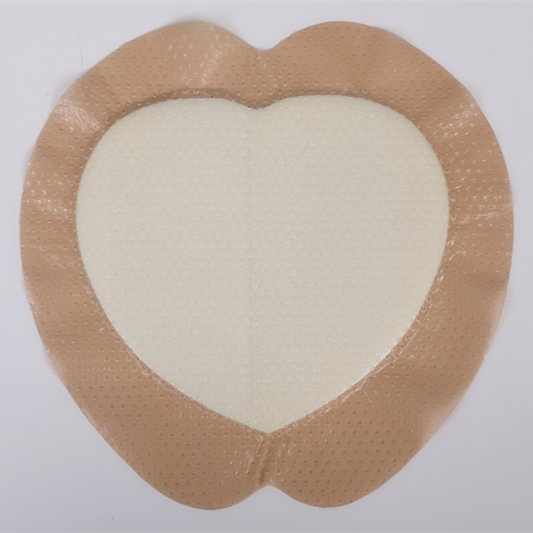Pressure sores, also known as bed sores or pressure ulcers, are a common skin problem in people who are bedridden or wheelchair-bound. For the treatment of pressure ulcers, wound dressing change is a crucial step. Below, we will introduce to you in detail the professional process of changing dressings on pressure ulcer wounds.
Frequency of care:
Generally speaking, every 1-2 days, no more than 3 days at most. However, in some special circumstances, such as when the temperature rises, exudation increases, the wound is deep, or it is contaminated by urine and feces, the frequency of replacement should be higher.
Preparation of nursing tools :
We will need disposable dressing bowls, tweezers, cotton balls, scissors, silicone gel foam dressings and sterile gloves,
Steps to change dressing:
1. Washing:
First, we need to wash away the dust and dirt from the garden. For patients with bedsores, wound cleaning is essential. We can use a shower or water pipe to let cool tap water flow through the wound, and at the same time gently touch the wound with our hands to help remove necrotic tissue and secretions. For wounds that have not healed for a long time, bleeding is a good thing. After cleaning, gently wipe the area around the wound with a towel and keep it dry.
2. Debridement:
We need to further clean up the wound. If there is black necrotic tissue firmly adhered to the surface of the wound, do not forcefully clean it. This means that the pressure sore is not serious. Every time you change the dressing, just remove the raised scabs at the edges. However, if you feel that there is a cavity at the bottom of the wound, you need to perform surgical debridement to remove the necrotic tissue and allow the pus to fully drain.
3. Disinfection:
Disinfection is an important step in protecting wounds from germs. We can choose to rinse apply wet compresses, or both at the same time. Irrigation can remove purulent secretions, and moist compresses can drain bacteria from deep within the wound. Use disinfectants such as iodophor for flushing. Make sure that the disinfectant can fully contact the wound without leaving any dead space. Note that alcohol cannot be used for disinfection.
4. Change the dressing:
When the wound surface is covered with fresh red granulation tissue, or the wound is hollow, we recommend using alginate dressing to cover or fill it. It is necessary to ensure that all cavities are filled with alginate dressings, coupled with the use of silicone gel foam dressings, which not only prevent external bacteria from contaminating the wound, but also avoid tape allergies, reduce wound pressure, and absorb more exudation liquid.
When dealing with pressure ulcers, there is an important note: Regardless of the type of wound, never expose the wound directly to the air. Doing so may cause pus to accumulate under the crust and the wound to become infected. For severe bedsores, surgery remains the treatment of choice, with medication as a secondary option.
For more information customized on Innomed® Silicone Foam Dressing, Refer to the Previous Articles. If you have needs, you are welcome to contact us; You Wholeheartedly. At longterm medical, we transform this data by Innovating and Developing Products that Make Life easier for those who need loving care.
Editor: kiki Jia

 English
English عربى
عربى Español
Español русский
русский 中文简体
中文简体








